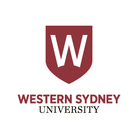Master of Applied Neuromorphic Engineering
Master of Applied Neuromorphic Engineering
Neuromorphic Engineering is an exciting inter-disciplinary field combining aspects from electrical engineering, computer science, neuroscience, signal processing and mathematics. The Master of Applied Neuromorphic Engineering offers students an opportunity to partner with high-profile industry partners in an applied project or a research project, mentored by leading researchers from the International…
Categories
COURSE DESCRIPTION
Neuromorphic Engineering is an exciting inter-disciplinary field combining aspects from electrical engineering, computer science, neuroscience, signal processing and mathematics.
The Master of Applied Neuromorphic Engineering offers students an opportunity to partner with high-profile industry partners in an applied project or a research project, mentored by leading researchers from the International Centre for Neuromorphic Systems at the MARCS Institute.
Note: All students who enrol in the 8124 Master of Applied Neuromorphic Engineering will have the option to transition to 8123 Master of Neuromorphic Engineering at the end of their first year if they meet the transition requirements.
Students may be required to travel between campuses to complete their subjects.
This program seeks to address the rapidly growing demand for alternative inter-disciplinary technologies, such as bio-inspired agile sensory systems, smart edge devices, and brain-inspired high performance computational platforms. The students will be introduced to state-of-the-art neuromorphic hardware, sensors and algorithms in a highly structured way that increases their acumen for approaching new situations with creativity and initiative.
A student completing the two-year degree may apply to pursue a PhD. Two exit options (Graduate Certificate in Neuromorphic Engineering and Graduate Diploma in Neuromorphic Engineering) are also available. The majority of the programs subjects will be undertaken at Parramatta City – Hassall St campus, while the applied project and research project will be located at Penrith campus.
Professional accreditation
Professional accreditation will be sought from Engineers Australia for the Master of Neuromorphic Engineering program. Students will be subsequently eligible to apply for Chartered Professional Engineering registration upon successful completion of the required engineering practice period specified by Engineers Australia.
Your career
As an engineering graduate, you can look forward to career opportunities in:
Artificial Intelligence (AI)
Robotics and Mechatronics
Computational Neuroscience
Electronics Engineer
Biomedical Engineer
Signal Processing
REQUIREMENTS
An undergraduate degree in electrical, electronics, biomedical engineering, computer science, physics or mathematics
Be selected by interview from the International Centre for Neuromorphic Systems (ICNS) within The MARCS Institute.
English Language Requirements:
IELTS: 6.5 overall score (min 6.0 in each subtest); TOEFL internet-based score of 82: Writing 21, Speaking 18, Reading 13, Listening 13; Pearson Test of English Academic (PTE): 58 overall; No communication skills less than 50.
EDUCATIONAL INSTITUTION
Western Sydney University is located in New South Wales and operates out of 13 accessible campuses across Sydney (Bankstown, Liverpool City, Campbelltown, Sydney City, Sydney Olympic Park, Parramatta, Parramatta City, Westmead, Penrith and Hawkesbury). The student body numbers more than 35,000. With a mix of modern high rise and heritage buildings, equipped with technology-enabled learning facilities, libraries, research facilities, and studios, the University covers a wide range of academic programs including the School of Business, School of Computer, Data and Mathematical Sciences, School of Education, School of Engineering, Design and Built Environment, School of Health Sciences, School of Humanities and Communication Arts, School of Law, School of Medicine, School of Nursing and Midwifery, School of Psychology, School of Science, School of Social Sciences and the Graduate Research School.




